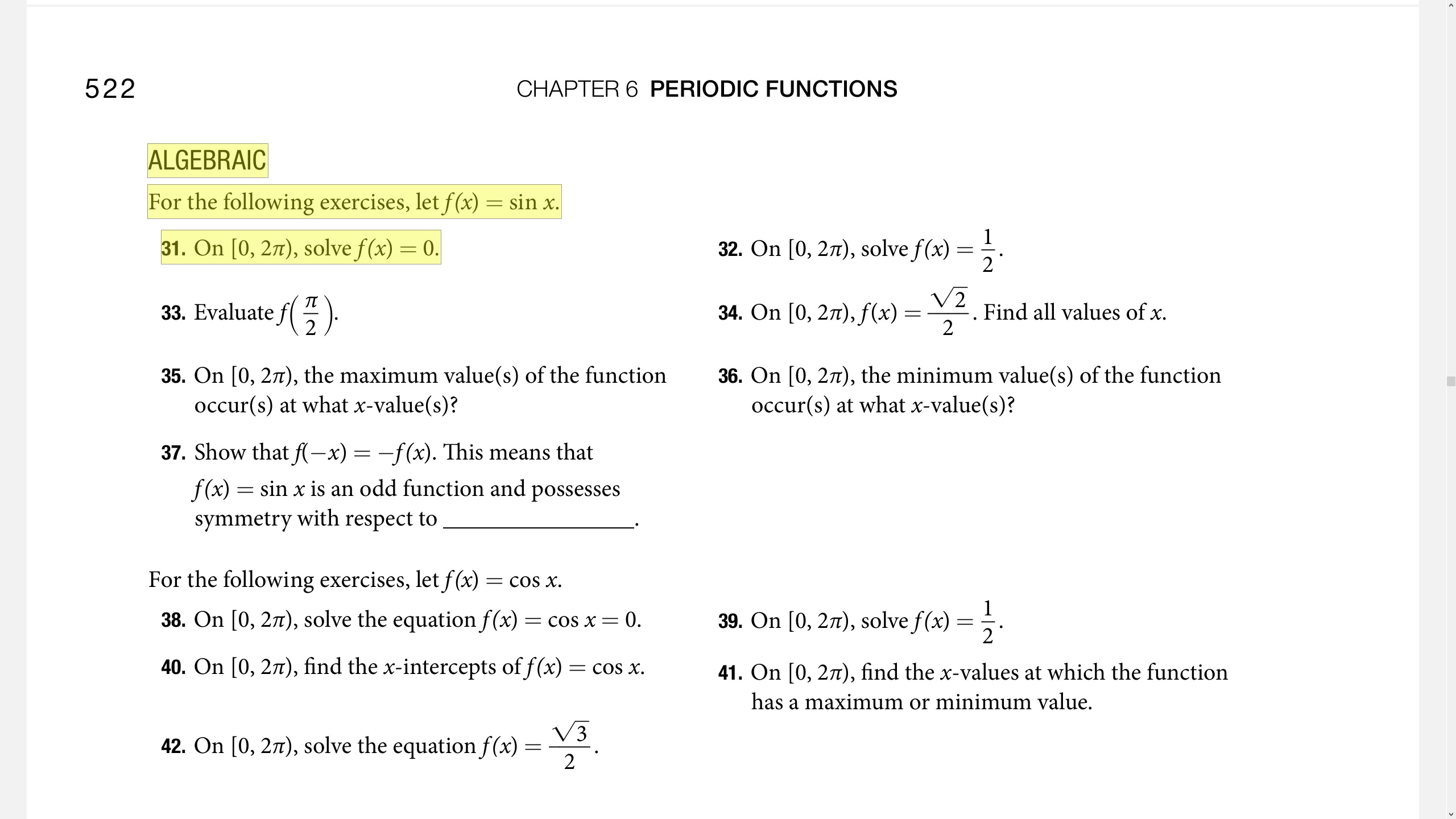I've been knocking out the trig problems in this section with minimal difficulty so far, but I've run straight into a brick wall on this "Algebraic" part. I'm asked to find sin(x)=0 between [0,2π). If I graphed the unit circle this would be a trivial exercise to show sin(θ)=0 when θ=0 or π.
Where I have trouble is- I'm very explicitly being told here that the solution is ALGEBRAIC, and I'm struggling to figure out a way to rearrange sin(x)=0 to come up with the known answer. Further, unit circles are not in this chapter, they wouldn't likely ask me to exercise a skill taught in another chapter. What am I missing?
It's not just 31, either. Looking ahead at eg 37, I can easily show sin(-x) = -sin(x) on a unit circle. I could maybe fuck around with inverse trig ratios but those are in section 3- this is only section 1.
Help me out here, drop a hint, share a link: how do I solve sin(x)=0 on [0,2π), but algebraically? I suspect it's something glaringly obvious and/or very very simple I've overlooked.

I see how this would prove x = 1 when sin A = sqrt (1 - x^2) = 0 , but I don't see how to find the relevant angle from this. How did you go from sin A = sqrt (1 - x^2) to sin A = 0 when A = nπ where n is any integer?
I'm playing a bit loose and fast, but think about it like this. Imagine you have a triangle in the 1st quandrant with unit hypotenuse. The triangle collapses to the x axis, giving x = 1 and theta = 0. The consequencea for sin 0 can be determined from this
Gotcha, thanks.